#[cyathus stercoreus]
Explore tagged Tumblr posts
Text
FOTD #024 : dung-loving bird's nest! (cyathus stercoreus)
the dung-loving bird's nest (what a name !!) is a fungus in the family nidulariaceae. it grows worldwide, & is most often found in animal dung.
the big question : can i bite it?? while inedible, this fungus is used in both traditional medicine & biodegradation.

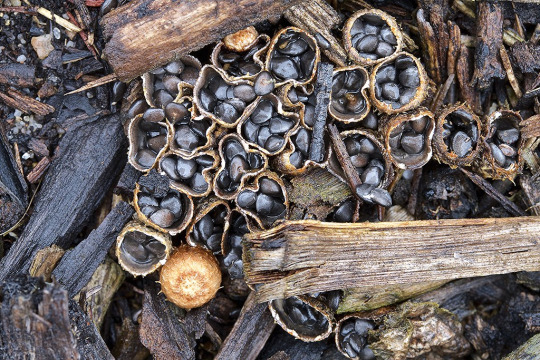
c. stercoreus description :
"the fruiting bodies, or perida, are funnel- or barrel-shaped, 6–15 mm tall, 4–8 mm wide at the mouth, sometimes short-stalked, golden brown to blackish brown in age. the outside wall of the peridium, the ectoperidium, is covered with tufts of fungal hyphae that resembles shaggy, untidy hair. however, in older specimens this outer layer of hair (technically a tomentum) may be completely worn off. the internal wall of the cup, the endoperidium, is smooth and grey to bluish-black. the 'eggs' of the bird's nest – the peridioles – are blackish, 1–2 mm in diameter, & there are typically about 20 in the cup. peridioles are often attached to the fruiting body by a funiculus, a structure of hyphae that is differentiated into three regions: the basal piece, which attaches it to the inner wall of the peridium, the middle piece, & an upper sheath, called the purse, connected to the lower surface of the peridiole."
[images : source & source] [fungus description : source]
"little freak </3 i love him. be gross like that."
#• fungus of the day !! ���#[cyathus stercoreus]#: dung-loving bird's nest :#024#||#fungi#mycology#fungus#mushrooms#earth#cottagecore#forestcore#mushroom#foraging#nature#cyathus stercoreus#dung-loving bird's nest
39 notes
·
View notes
Text
Cool mushrooms I found today!
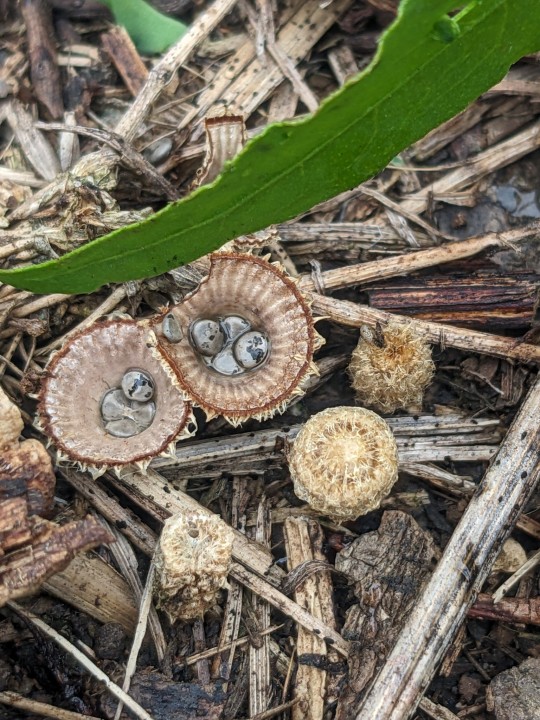
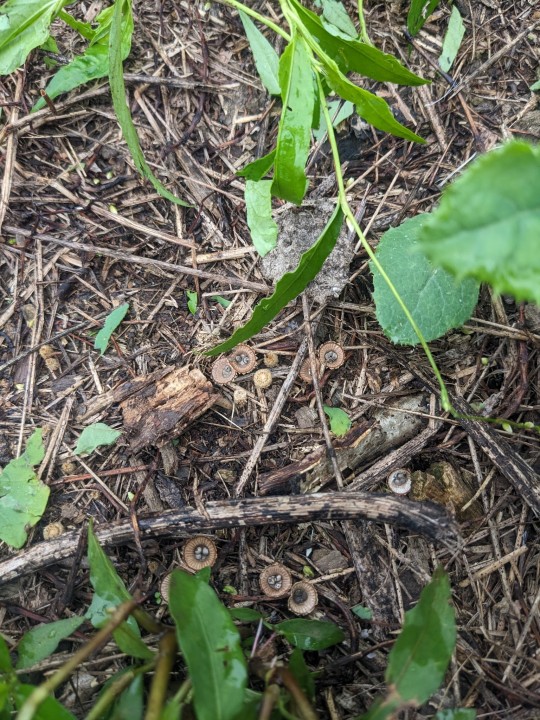

Dung-loving bird's nest fungus
Cyathus stercoreus
#from the field#mushroom#mushrooms#fungus#fungi#mycology#mycologist#birds nest fungus#thought it was fluted at first but its actually dung loving#i didnt see any poop tho but it couldve decayed already
4 notes
·
View notes
Text

きのこ図鑑
No.409 ハタケチャダイゴケ
Cyathus stercoreus
1 note
·
View note
Text
What should I do for 200 followers?
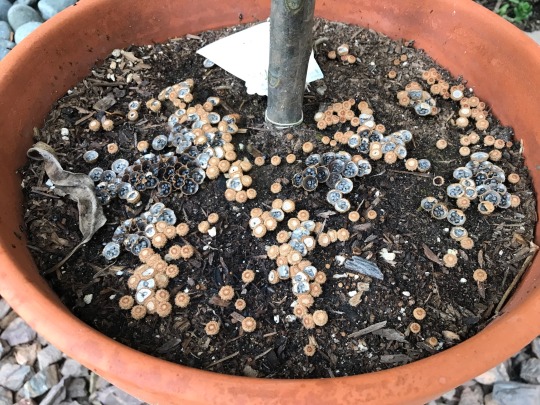
Also look at this fungus.
#ven talks#fungus#mushrooms#fungi#birds nest fungi#nidulariaceae#Cyathus stercoreus#dung loving birds nest#dung birds nest
4 notes
·
View notes
Photo



Splash Cup Birds Nest - Cyathus stercoreus. Found in the mulch at the USGS Native Bee Lab. Photo by Dorcas Ogunbanwo.
108 notes
·
View notes
Photo



Birds-nest fungus, Cyathus stercoreus, WG Jones state forest, Conroe, Texas, Montgomery county, 11/16/19
photographs by Paxon Kale
43 notes
·
View notes
Photo


This really pretty bug was living near a patch of cyathus stercoreus in my backyard. I think it was chlorochroa sayi
2 notes
·
View notes
Photo

bird’s nest fungus!! first time i’ve noticed it in the woods around town. pretty sure it’s Cyathus stercoreus?
#birds nest fungus#fungi#mycology#new zealand fungi#(even though i'm pretty sure its found worldwide)#this was so exciting i did a happy little jump when i found it#just sitting on a log!! wild#this was the same forest i've found a ton of cool fungi in#im so mad its a plantation forest that'll get cut down at some point#there's tons of native plants in the understory that'll die too#:(#homepost#my photos
1 note
·
View note
Photo
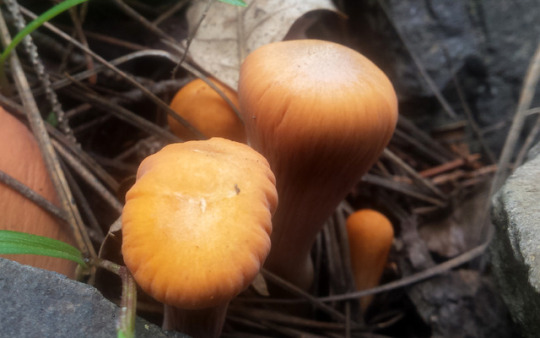


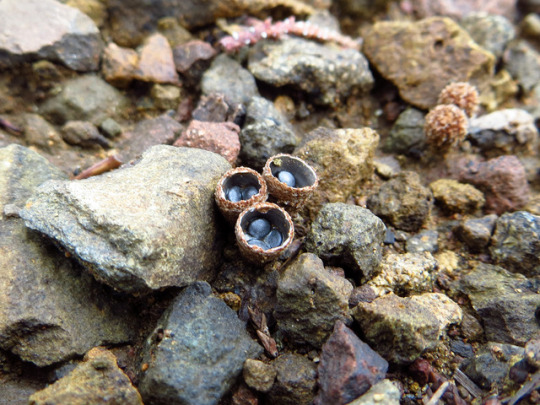
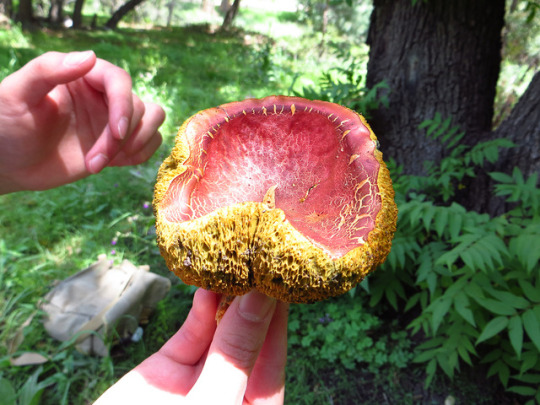
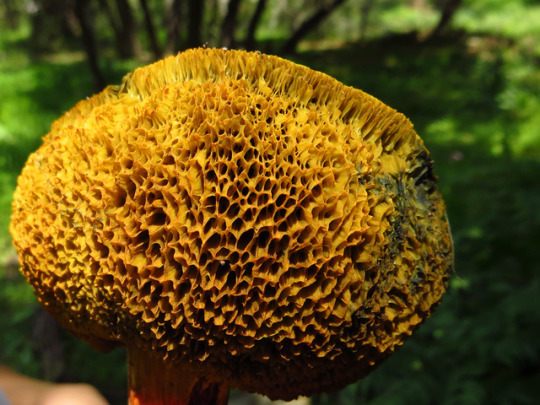
assorted fungi from my New Mexico field work: Clavariadelphus truncatus club coral, Vascellum curtisii puffball, Crucibulum laeve and Cyathus stercoreus bird’s nests, and a big ass Exsudoporus permagnificus. I don’t know shit about fungi so all IDs are provisional. experts welcome to correct me *cough @sporesmore*
100 notes
·
View notes
Photo

Fungal Laccase A Review on Production and its Potential Application for Human Welfare
by Sonal K. Makwana | Rakeshkumar R. Panchal | Kiran C. Deshmukh "Fungal Laccase - A Review on Production and its Potential Application for Human Welfare"
Published in International Journal of Trend in Scientific Research and Development (ijtsrd), ISSN: 2456-6470, Volume-5 | Issue-1 , December 2020,
URL: https://www.ijtsrd.com/papers/ijtsrd38221.pdf
Paper URL : https://www.ijtsrd.com/biological-science/biotechnology/38221/fungal-laccase--a-review-on-production-and-its-potential-application-for-human-welfare/sonal-k-makwana
callforpapertechnology, technologyjournal
Laccase belongs to the blue multi copper oxidases, which are widely distributed in fungi and higher plants. Lignin degradation by several white rot fungi, such as Phanerochaete chrysosporium, Pleurotus ostreatus, Coriolus versicolor, Cyathus stercoreus, and Ceriporiopsis subvermispora, have been studied. Laccase enzymes have attracted attention due to its wide use in textile, pulp and paper, and food industry. Recently, it is being used in developing biosensors for detection and removal of toxic pollutants, designing of biofuel cells and medical diagnostics tool. Laccase is also being used as a bioremediation agent as they have been found potent enough in cleaning up herbicides pesticides and certain explosives in soil. Because of having the ability to oxidize phenolic, non phenolic lignin related compounds and highly fractious environmental pollutants, laccases have drawn the attention of researchers in the last few decades. Commercially, laccases have been used to determine the difference between codeine and morphine, produce ethanol and are also being employed in de lignify woody tissues. To sustain this trend widespread availability of laccase and efficient production systems have to be developed. The current review discuss major advances in application of fungal laccase in white biotechnology. It delineate the laccase production and various cultivation techniques that have been developed to efficiently produce laccase at the industrial scale. The role of laccase in different food industries, and significant recent advances in the use of laccases are discussed in this review.
0 notes
Photo


A bird’s nest fungus, probably Cyathus stercoreus. If you look more closely at a bed of mulch, you can often find them.
79 notes
·
View notes
Photo


Cyathus stercoreus
105 notes
·
View notes
Photo

Close-ups of the mushrooms I found Christmas morning. If you look in the lower left corner, you can see Cyathus stercoreus, a cup fungus.
41 notes
·
View notes
Photo


I found Cyathus stercoreus right next to Marasmius oreades. It's so rare that I'm able to find cup fungi.
254 notes
·
View notes